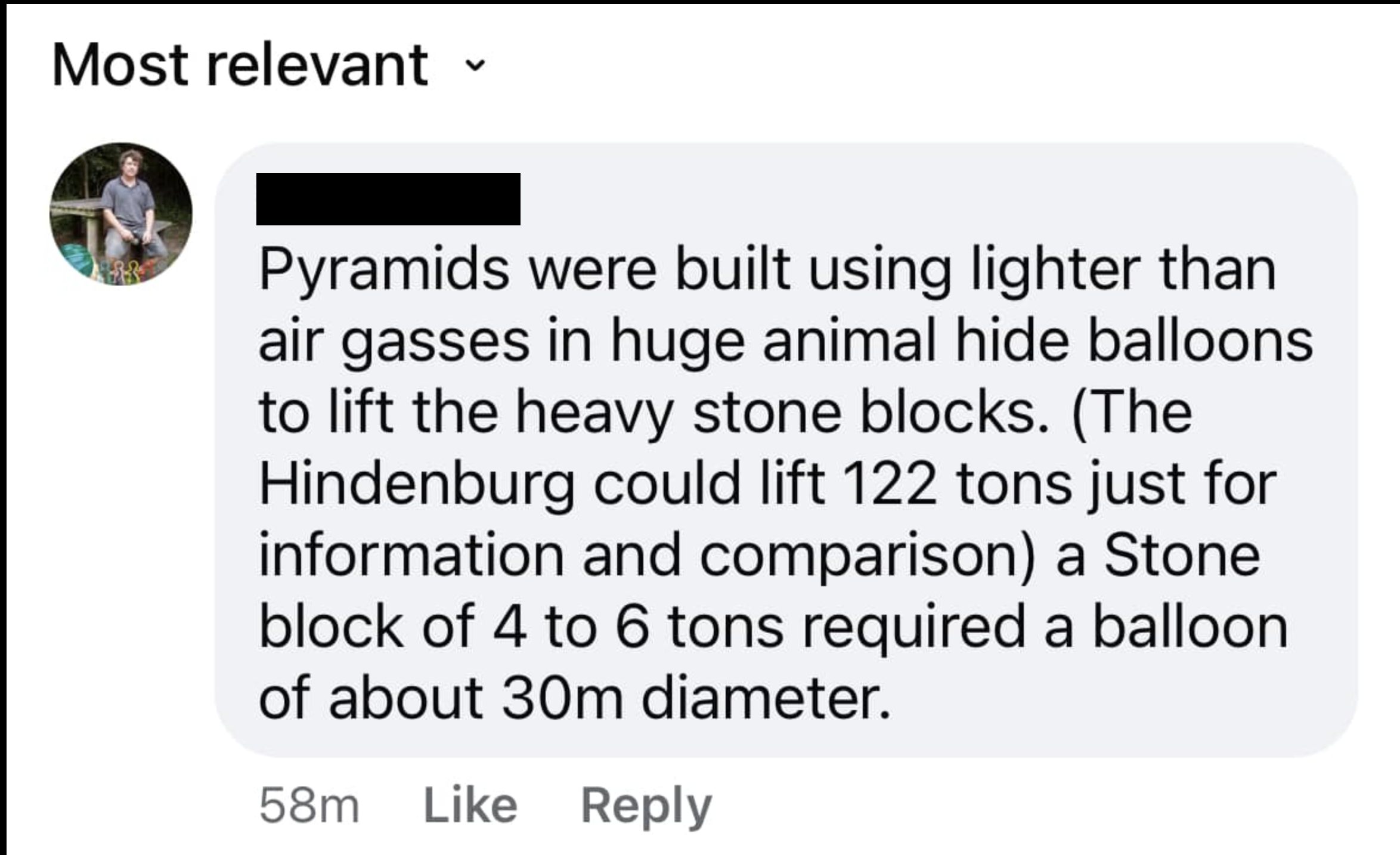this post was submitted on 16 Aug 2024
243 points (99.6% liked)
InsanePeopleFacebook
2527 readers
1 users here now
Screenshots of people being insane on Facebook. Please censor names/pics of end users in screenshots. Please follow the rules of lemmy.world
founded 1 year ago
MODERATORS
you are viewing a single comment's thread
view the rest of the comments
view the rest of the comments

Ooooh, i love this idiot! It overlaps my historical leather working hobby with my hatred of pseudohistorical bullshit.
So, a 30m diameter sphere contains 14.000m3 of gas. Every liter of hydrogen lifts 1.14 grams, and for helium it's 1.05 grams. So 14.000m3 = 14 million liters, or about 14 million grams, which is 14 tons. Sounds pretty decent until you realize that animal hide isn't exactly weightless.
A tanned cowhide, before it's split, is over 4cm thick. Vegetable tanned cattlehide weighs something like 40 kg for a 5m2. But lets see how thick out balloon is. If it can lift 6 tons, it can only weigh some 8000kg itself. Our 30m sphere has a surface area of some 2800m2, so that means our animal hides can weigh, at most, 8000/2800=2.8kg per square meter. Those at home have probably noticed that 2.8 is a bit less than the 8kg you need to use cowhide.
So, what kind of leather or hide were those balloons then? Well leather is usually sold in "ounces per square foot" (even in Europe), so we can just look it up. 2.8kg per square meter is about 9.2 ounce per square foot (says wolfram alpha), and a handy table I have printed says that's around 3.6mm thick.
So, we are too believe that the Egyptians made a 30m balloon, out of what is basically cheap-belt and saddlebag leather, somehow got that not just air-tight, while being ridiculously thin, and then used it to build massive structures.
I will note there is historic precedent for using gut, not hide, for lifting gas envelopes. Airship R101 had gut gas bags.
Do they need to do that before, or after they learn how to harness a tremendous amount of hydrogen? Which they conveniently forgot to mention anywhere.
You also think that they would have made a few pictures of that happening, instead of the pictures they did make, which clearly show manual slave labor building the pyramids.
Not just air-tight, lighter-than-air-tight. I'm not sure if it's true for the whole set of lighter-than-air gasses, but helium is infamously difficult to keep from leaking, even with modern technology.
Good at making gasses behave is a weird choice for ancient technologies we lost.
Hydrogen is even worse. It basically moves through solid steel cylinders.
Hah gain even more lifting power and also sidestep the whole need of creating helium by filling it with vacuum!
\s if needed 🤷🏻♀️
i think they would likely be using intestines or cow stomachs as did the rigid airships of the time, as it was the only material that could hold back hydrogen, so that would've been an option. Especially with leather production, though someone would have to have thought about it first.
I'm not sure either hydrogegn OR helium would've been accessible at the time, though if we're tying to logically analyze this, its probably worth considering they would've alleviated like 80% the mass of the stone, and not all of it, as it's a little redundant to make the thing float.